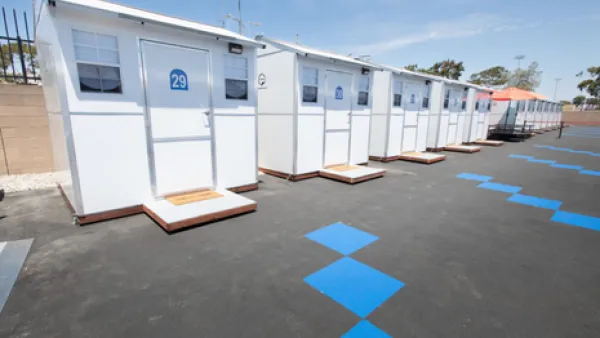Providing temporary housing in tiny homes has helped a Washington long-term care facility keep its doors open in the face of a growing housing crisis.

Jamie’s Place is the only long-term care facility in Washington state’s vast Methow Valley, and its ability to care for elders was threatened last year when caregivers struggled to find safe and affordable housing.
“They were worried they [would] need to move due to lack of housing,” said Rana Clarke, the executive director of Jamie’s Place. “One had been couch-surfing for over a year. . . . We have an older caregiver living in a trailer without running water.” Another employee commuted more than 30 miles over a mountain pass due to lack of local housing—time-consuming, hazardous, and unsustainable in the face of high gas prices.
In all, 5 of the facility’s 14 caregivers were housing insecure.
Unlike businesses that can shorten work hours or close for a day or two each week to address staffing shortages, Jamie’s Place couldn’t as it provides care for seniors 24 hours a day, seven days a week. The nonprofit—formally known as the Methow Valley Family Home Center Association—operates two homes, each occupied by six older adults. “We had some real concerns about being able to stay open if we were going to start losing our workforce,” says Clarke.
Staff and board members scoured the community in search of existing housing for the caregivers, even reaching out to local hotels and looking for accessory dwelling units, those smaller, more affordable units that are often called ADUs, granny flats, or mother-in-law apartments. But those avenues didn’t pan out. The vacancy rate in Methow Valley is low, less than 1 percent. A “healthy” rate—where home seekers have some choices available to them—falls in the 3 percent to 7 percent range.
The conversation then turned to the possibility of providing housing on-site at Jamie’s Place, and that’s when the team began to consider tiny houses.
Getting to a ‘Yes’ for Tiny Houses
With the notion of tiny houses in hand, Jamie’s Place staff approached ...
FULL STORY: Why an Eldercare Facility Turned to Employer-Provided Housing

National Parks Layoffs Will Cause Communities to Lose Billions
Thousands of essential park workers were laid off this week, just before the busy spring break season.

Retro-silient?: America’s First “Eco-burb,” The Woodlands Turns 50
A master-planned community north of Houston offers lessons on green infrastructure and resilient design, but falls short of its founder’s lofty affordability and walkability goals.

Delivering for America Plan Will Downgrade Mail Service in at Least 49.5 Percent of Zip Codes
Republican and Democrat lawmakers criticize the plan for its disproportionate negative impact on rural communities.

Test News Post 1
This is a summary

Test News Headline 46
Test for the image on the front page.

Balancing Bombs and Butterflies: How the National Guard Protects a Rare Species
The National Guard at Fort Indiantown Gap uses GIS technology and land management strategies to balance military training with conservation efforts, ensuring the survival of the rare eastern regal fritillary butterfly.
Urban Design for Planners 1: Software Tools
This six-course series explores essential urban design concepts using open source software and equips planners with the tools they need to participate fully in the urban design process.
Planning for Universal Design
Learn the tools for implementing Universal Design in planning regulations.
EMC Planning Group, Inc.
Planetizen
Planetizen
Mpact (formerly Rail~Volution)
Great Falls Development Authority, Inc.
HUDs Office of Policy Development and Research
NYU Wagner Graduate School of Public Service





























